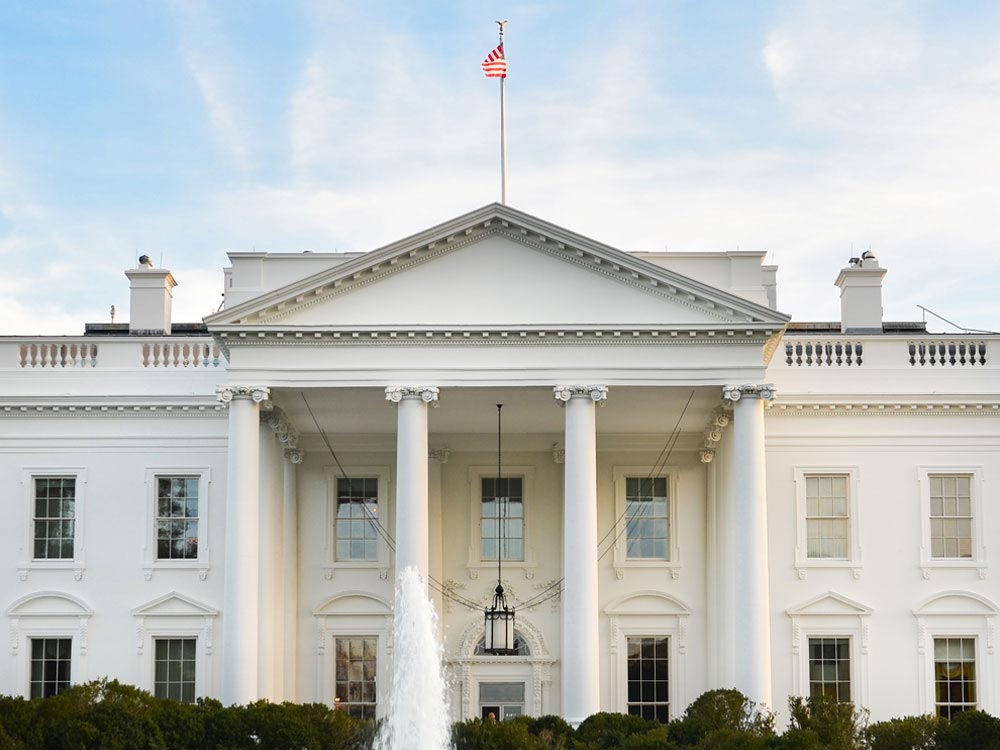

White House, Can a US President Be Impeached


The United States Constitution was written in 1787 and made operational from 1789. Article I Section 2 of the Constitution gives the House of Representatives the sole authority to impeach a standing US President. Article I Section 3 gives the Senate power to try all impeachments.
Article II Section 4 states, “The President, Vice President and all Civil Officers of the United States, shall be removed from Office on Impeachment for, and Conviction of, Treason, Bribery, or other high Crimes and Misdemeanors.”
If the US President is reported to have committed, by word or act, Treason, Bribery, or other high crimes and Misdemeanor, then the House of Representatives must appoint a Judiciary Committee of the House of Representatives that is authorized to hold hearings, hear and examine the testimonies of all concerned witnesses, and collect all relevant evidence from concluding whether the charges deserve to proceed for impeachment.
The process includes an examination of all witnesses by the Committee Counsel, Minority Counsel, and every member of the House Judiciary Committee. Based on the findings, the Committee prepares Articles of Impeachment, which may include multiple counts. The Committee then votes on each Article of Impeachment along with the counts and presents the results to the House of Representatives.
The House debates every Article of Impeachment and votes on each. If a two-thirds majority approves the Article of Impeachment, the process of Impeachment is then carried forward and sent to the Senate for trial.
The process of trial in the Senate is handled by the representatives or ‘managers’ of the House of Representatives, with assistance from prosecution attorneys empowered to debate the prosecution of impeachment.
During this process, the Senate performs the role of a jury and listens to the arguments presented. Once complete, the Senate debates the matter in detail and culminates with a vote by each member of the Senate. If the two-thirds majority vote in favor of conviction, then the US President shall be removed from office.
Article I Section 3 states that in case any present member decides to abstain from voting, it is assumed to be a vote against conviction.
Only two Presidents in the United States history have been impeached but were not convicted;
President Johnson (the 17th US President, 1865-69) faced impeachment charges of violating the Tenure of Office Act, 1867, for removing Secretary of War Edwin Stanton, a member of the Cabinet, without seeking senatorial consent.
Andrew Johnson became President after President Abraham Lincoln was assassinated towards the end of the American Civil War. His policies towards the South on Reconstruction was strongly opposed by the Radical Republicans. The President was strongly opposed to the Reconstruction Act being proposed and used his power to veto the same after the majority had voted in favor.
He followed up on this by dismissing Secretary of War Edwin Stanton, a close ally of the Radical Republicans, in contravention of the Tenure of Office Act, that had been passed the same day as the Reconstruction Act. The House of Representatives proceeded with his impeachment.
As per procedure, the Senate tried the impeachment and narrowly voted against conviction. President Andrew Johnson was impeached but was not convicted. Though unpopular, he continued to function as President.
President Nixon (the 37th US President, 1969-74) came close to being impeached by the House of Representatives for his involvement in the Watergate Scandal. He resigned as President on August 8, 1974, before the impeachment made it to trial at the Senate. In doing so, he became the first US President to resign from office before being impeached. His successor, President Gerald Ford, pardoned him on September 8, 1974.
Following the controversy regarding his extramarital affair with White House intern Monica Lewinsky, President Bill Clinton (the 42nd U.S. President, 1993-2000) faced impeachment by the House of Representatives on perjury and obstruction of justice. Later, the Senate acquitted him of both charges. He went on to complete his second term in office despite being impeached.
The Republic of Madagascar is an island country located in the Indian Ocean, off the…
The Euro is the official currency of the European Union. It is, however, not incumbent…
There are many countries or regions that are partially recognized by the UN, have disputes…
The Alaska Statehood Act was signed into law by President Dwight D. Eisenhower in 1958,…
The name Persia may, however, only be used to refer to Iran in some contexts.…
Hawaii is an Island State in the US. It is one of the 50 states…